Experiences refined for people
Experiences refined for people
You’re at the 2024 US Open, just a few feet from the promo booth, and your phone pings with an offer you can’t resist—perfect timing for last-minute upgrades or partner deals. This isn’t chance; it’s location-based marketing in action. Marketers targeting people near key spots report 32% more ‘Buy Now’ clicks, tapping into the instant readiness of fans primed to buy. Location-based marketing isn’t just for banner events. From retail stores to airports and fast-food chains, brands use geofencing and mobile beacons to reach customers at the perfect time, prompting quick decisions when they’re most likely to buy. What makes these tactics so effective? And how are they shifting customer engagement across industries? Read more to find out.
Location-based marketing (LBT) uses real-time data from mobile devices to send highly relevant content to people most likely to act. It links what users do online with where they go, letting brands predict customer needs—sometimes before the customer even notices they have them. With tools like geofencing and predictive algorithms, campaigns feel like nudges, not interruptions.
Location-based marketing is fast, personal, and hits at the right moment, all while respecting consumer privacy. 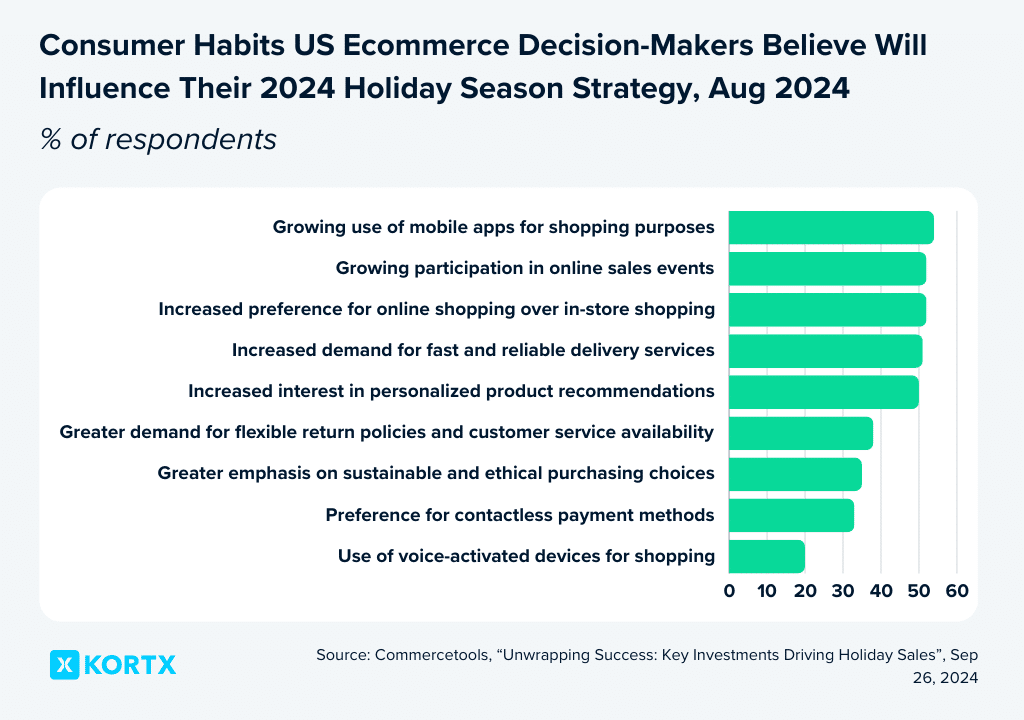 So, why is location-based targeting so valuable for digital marketers?
So, why is location-based targeting so valuable for digital marketers?
While often used interchangeably, location-based and proximity marketing each serve distinct purposes, differing in scale and intent. Location-based marketing is ideal for broader outreach, targeting users across larger areas such as neighborhoods or cities using GPS, Wi-Fi, or mobile networks. It's perfect for driving general awareness and foot traffic. Proximity marketing uses Bluetooth and beacons to send real-time alerts (often tied to promotions) to target a customer's exact location.
Marketers use four main methods of location-based marketing to reach users based on their current or past locations, all powered by mobile data. Each method serves different use cases.

Your most profitable customers might reside outside your current geo-targeting parameters. Many brands limit themselves by targeting select ZIP codes or a tight geographic area—like a 3-mile radius. While this seems cost-effective, it can restrict reach and performance by missing high-intent customers outside the geo-targeting parameters, ultimately leaving high-value users out of the targeting strategy. Blend location data with behavioral insights—like visit frequency, duration, and popular spots —to build targeted campaigns for high-intent customers. Instead of relying on broad, pre-built segments (e.g., shoppers who visited Walmart in the last year), platforms like Foursquare let marketers build custom, high-intent audiences based on real-time visit data, such as frequent visitors. Valuable location data will boost conversions and maximize ad spend by targeting frequent visitors and high-value prospects across industries.
Personalized content drives conversions, but it's the sharp execution of copy, visuals, and calls to action that genuinely hooks people. Even minor adjustments—a word here, a color change there—could be the difference between someone scrolling past or making a purchase. For example,
Test these variations to find what clicks with different audiences and regions. Industries like travel, hospitality, and finance—where journey-based messaging is often overlooked—stand to gain from more personalized content. Tailor the message, and the results follow. Layering real-time dynamic content factors like weather, time of day, or location into messaging can improve relevance and engagement.
Example: AquaTots
  |
For instance, AquaTots effectively uses dynamic geotargeting by showcasing available classes and dynamically swapping out the city based on user location.
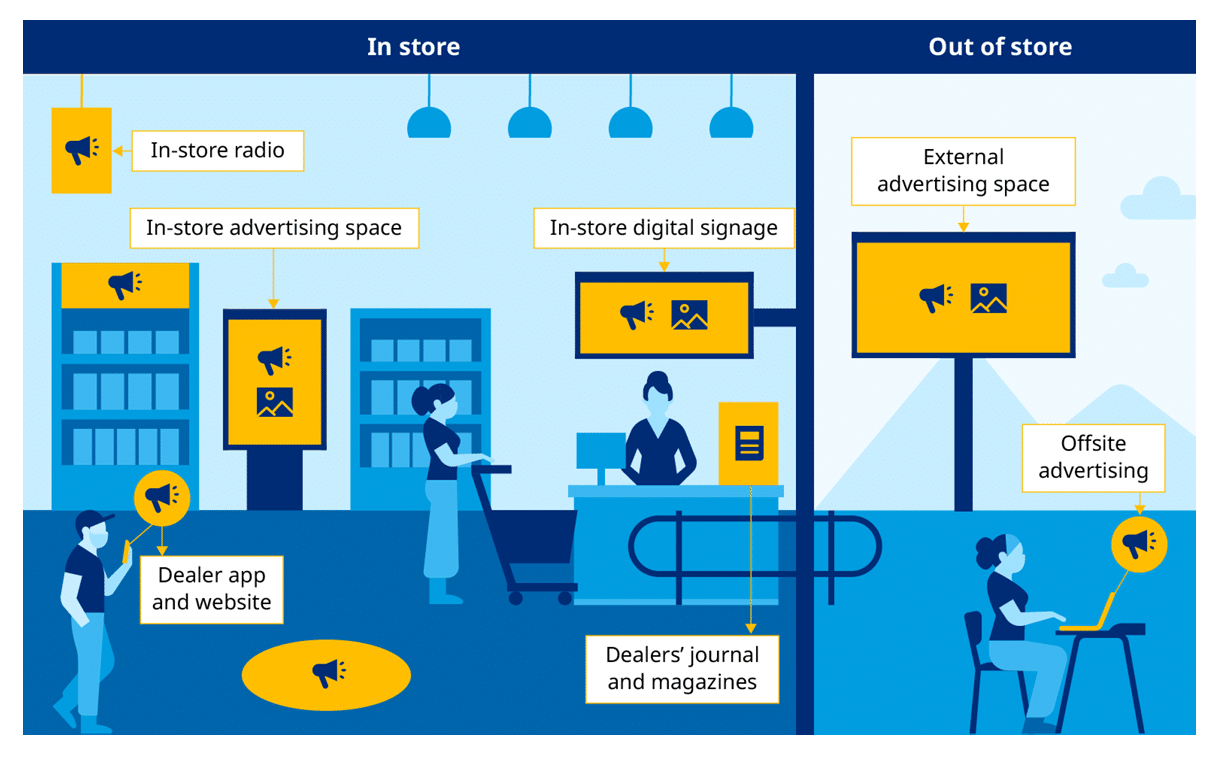 As customers switch between online and in-store shopping, in-store data helps create a smooth, personalized experience.
As customers switch between online and in-store shopping, in-store data helps create a smooth, personalized experience.

Digital shelf tags, interactive kiosks, and displays are now standard in stores. These stations create a digital feedback loop—the displays adapt to customer behavior, and the data helps retailers refine their strategies. For example, Walmart's "Scan as you Shop" service tailors in-store ads based on purchase history, displaying relevant promotions on their mobile devices while they shop around the store. 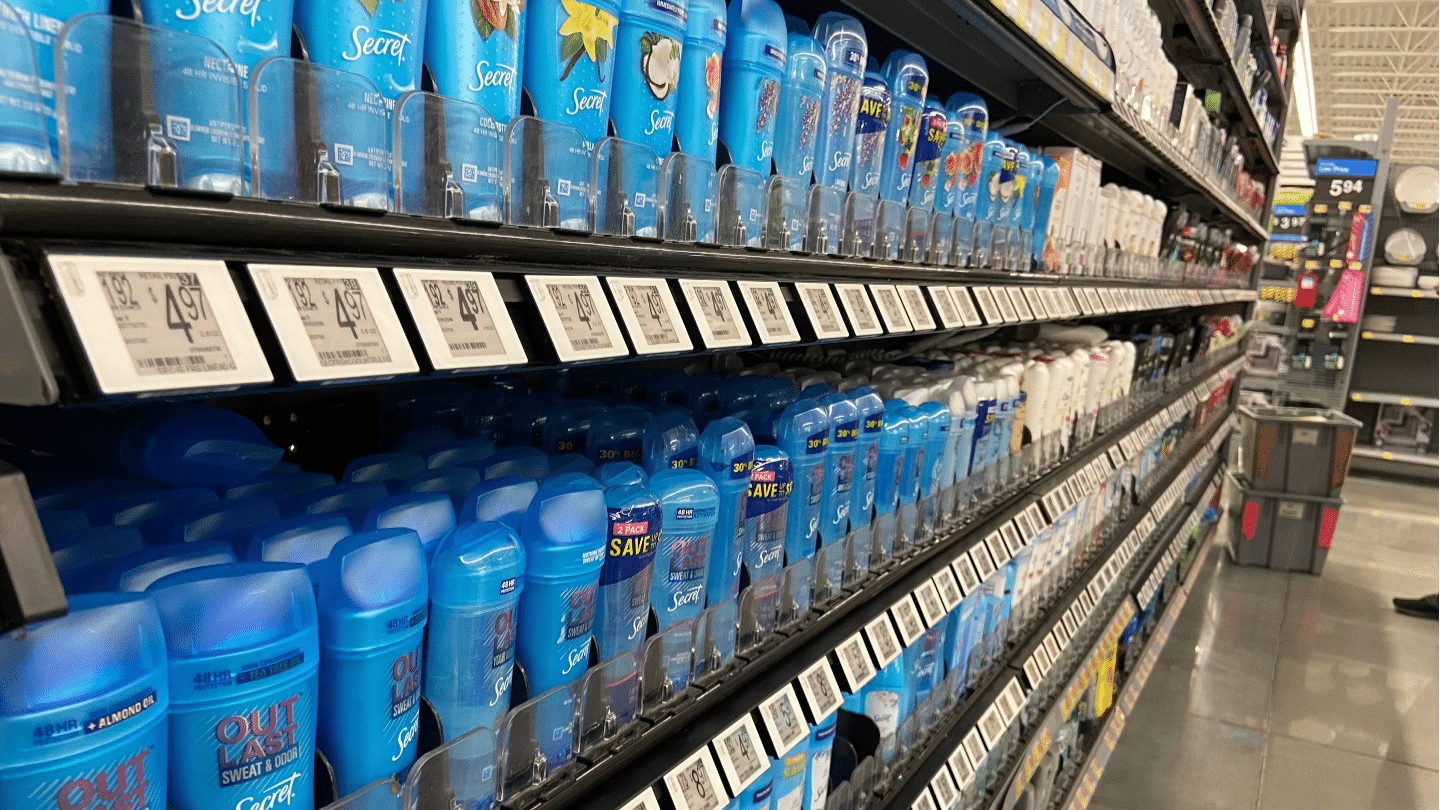 Walmart is also testing 30-second radio ads across its footprint. Audio ads let brands connect with customers anywhere in the store, not just near product displays. In-store media isn't just about immediate sales—it builds long-term brand awareness, too. Cooler Screens research shows that cooler door ads can boost purchase intent by 12% and improve brand opinion by 7%, demonstrating the lasting impact of this channel.
Walmart is also testing 30-second radio ads across its footprint. Audio ads let brands connect with customers anywhere in the store, not just near product displays. In-store media isn't just about immediate sales—it builds long-term brand awareness, too. Cooler Screens research shows that cooler door ads can boost purchase intent by 12% and improve brand opinion by 7%, demonstrating the lasting impact of this channel. 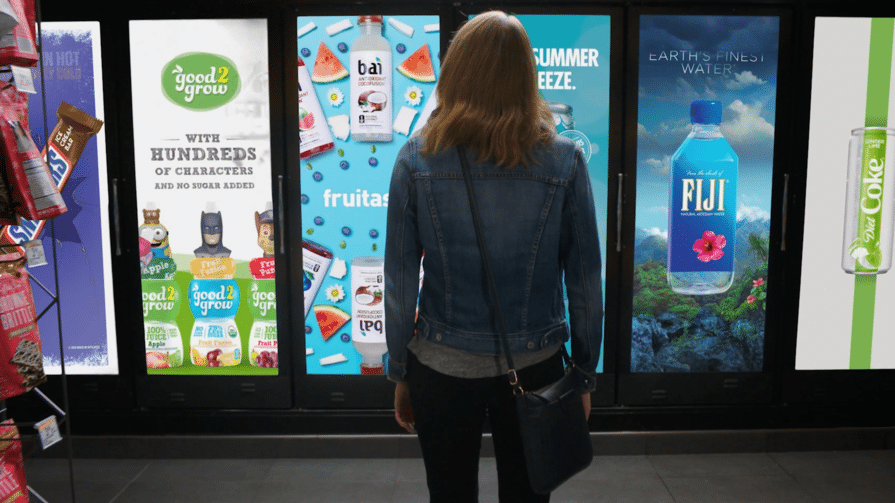 Retailers can use behavioral data (like customers who visited the cleaning aisle but didn't buy) to retarget online or through off-site channels like paid social or Connected TV. With IoT sensors, Wi-Fi, and GPS data, retailers can create heat maps to analyze foot traffic, improve store layouts, optimize product placement, and refine merchandising strategies. This leads to better conversions by focusing on hot zones and peak times.
Retailers can use behavioral data (like customers who visited the cleaning aisle but didn't buy) to retarget online or through off-site channels like paid social or Connected TV. With IoT sensors, Wi-Fi, and GPS data, retailers can create heat maps to analyze foot traffic, improve store layouts, optimize product placement, and refine merchandising strategies. This leads to better conversions by focusing on hot zones and peak times.

With geo-conquesting, brands can intercept high-intent shoppers before they make a purchase at a competitor. One of the most successful examples of geo-conquesting is Burger King's Whopper Detour campaign. Savvy marketers intercepted customers near McDonald's locations, leading to 1 million app downloads in days and 1.5 million overall.

Burger King's campaign nailed the mix of digital and in-person experiences, creating instant, memorable interactions that hooked hungry customers. Each moment became a chance to connect, spark excitement, and sell a whole lot of Whoppers and fries. 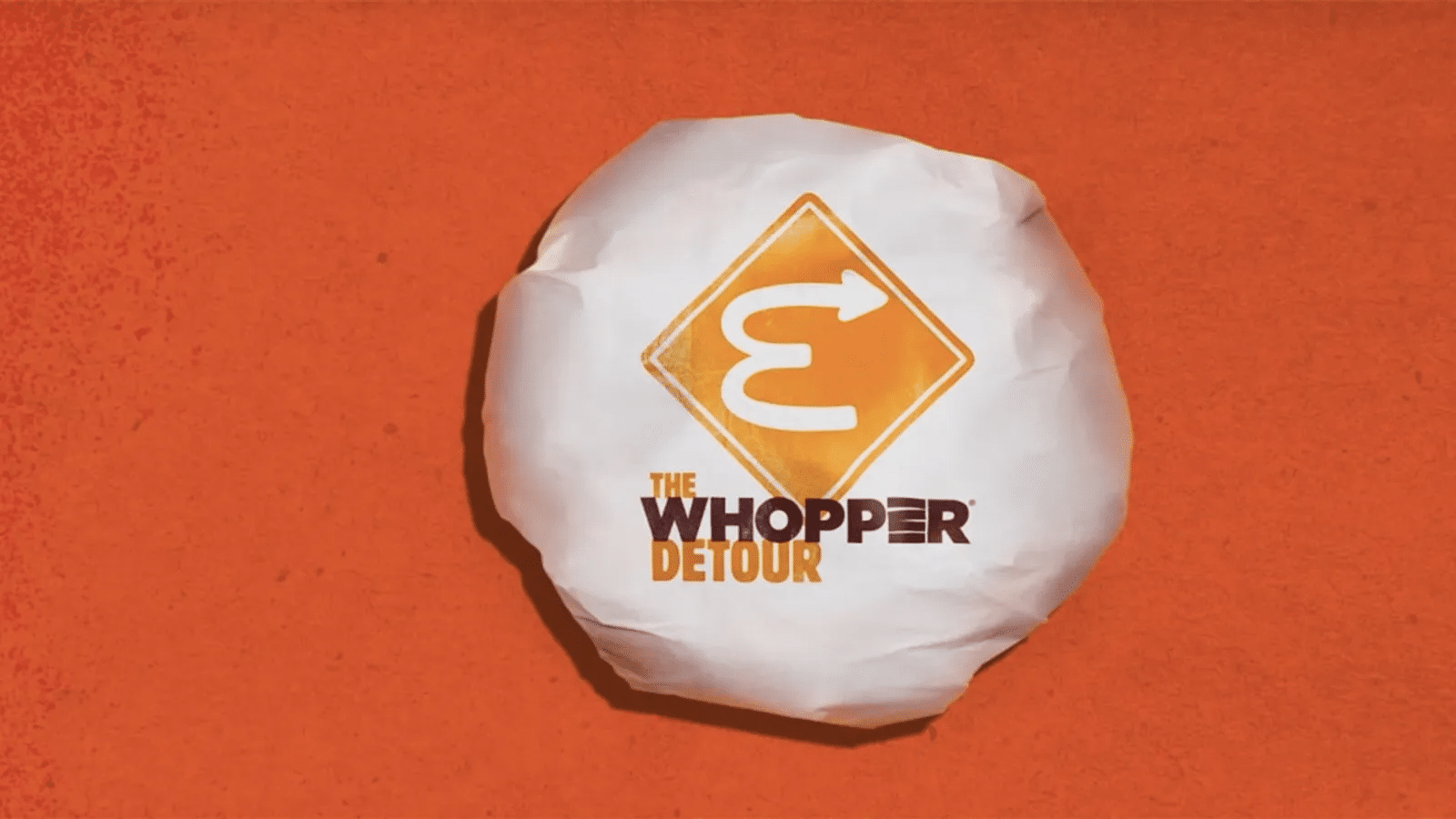 Brands can factor in visit frequency and recency for more accurate targeting:
Brands can factor in visit frequency and recency for more accurate targeting:
By combining geo-conquesting with precise targeting strategies like frequency and recency, brands can steal and convert competitors' customers, hopefully fostering long-term loyalty.
RCS (Rich Communication Services) delivers a 32% engagement lift, allowing brands to offer interactive experiences with maps, images, and CTAs. Nissan, for instance, used RCS for service reminders, achieving a 4.7x engagement increase and an 80% conversion rate. 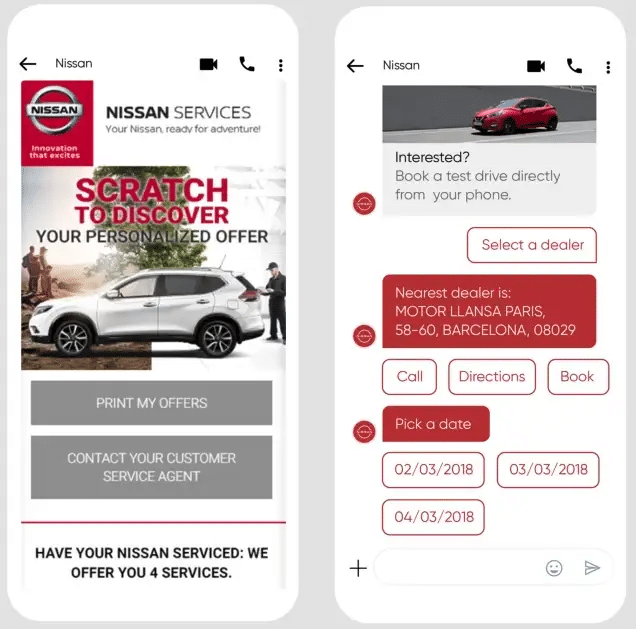 Push notifications, with a 90% delivery rate—50% higher than email open rates—connect instantly, especially for flash sales or reminders. When layered with behavior-based triggers (like browsing activity) and journey-based strategies (like onboarding), they create even stronger connections as the notifications become more relevant and timely. Pairing RCS and push notifications with Dynamic Creative Optimization (DCO) personalizes content, from interactive offers to location-based deals. Industries across the board can benefit from push notifications. Retailers can drive relevance with journey-based messages, while media companies boost engagement with behavior-based alerts.
Push notifications, with a 90% delivery rate—50% higher than email open rates—connect instantly, especially for flash sales or reminders. When layered with behavior-based triggers (like browsing activity) and journey-based strategies (like onboarding), they create even stronger connections as the notifications become more relevant and timely. Pairing RCS and push notifications with Dynamic Creative Optimization (DCO) personalizes content, from interactive offers to location-based deals. Industries across the board can benefit from push notifications. Retailers can drive relevance with journey-based messages, while media companies boost engagement with behavior-based alerts.
Location-based marketing raises privacy concerns. No one likes feeling stalked by an algorithm. So, if you don't want your brand to look like Big Brother, privacy must be a core part of your strategy.

Location-based marketing isn't just about one-off tactics. It's about using real-time data to build smarter, more cohesive campaigns. Expand your geotargeting, tailor content for local audiences, and do it all while respecting privacy. The future? Combining AI-driven predictive models with location data. Brands won't just know where customers are—they'll anticipate where they're going. Retail, travel, and entertainment will benefit the most, delivering offers before customers even know they want them. Now's the time to adopt these strategies and reach your audience wherever they are—before competitors do.
About the Author Corey Rice is Director of Strategy at KORTX and has nearly 18 years of digital marketing experience. Prior to joining KORTX, he worked at agencies, publishers, and tech companies in San Francisco and Detroit.
From us to your inbox weekly.